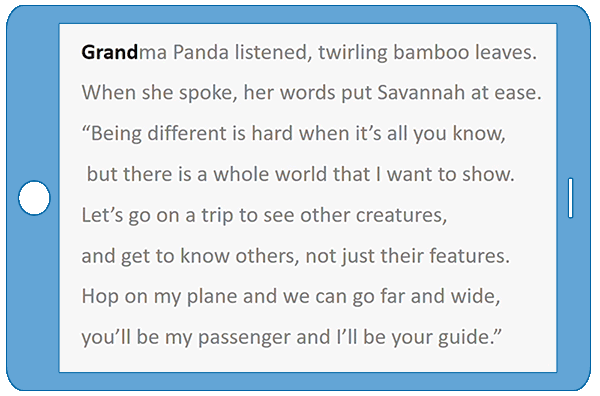A New & Proven Approach to Improve Reading Performance
10+
Peer-reviewed studies
Published in elite journals validating K-D RAP
2x
Improvement
Oral Reading Fluency*
5x
Improvement
Oral Reading Comprehension*

Within 6 Weeks
Over 90% of all children enrolled in K-D RAP improve reading fluency and comprehension
Lasting Results
Improvements in reading remained beyond 2 years following their last use of K-D RAP
Continued Growth
Children practicing K-D RAP over time experience continued growth with lasting results
K-D RAP Helps Unlock the
Power of Reading
“I am pleased to tell you that his words per minute have greatly increased. His accuracy has increased from 93% to 97%. Self-correcting has decreased 6 to 3. We decided to meet only two days per week for some maintenance and then to one day a week. He has improved his words per minute from 49 to 110!!! 110!!! I’m astounded and thrilled! Great program!”
–Kristen Peterson, Reading Specialist, Moline Schools
Symptoms
Signs Your Child Has Inefficient Eye Movement Skills

- Skips or rereads lines
- Loses place while reading
- Poor reading comprehension
- Difficulty completing assignments
- Short attention span while reading
- Uses a finger or ruler while reading
- Omits small words while reading
- Avoids reading
Authors & Experts
Dr. Amaal Starling, MD

“We teach students the physical act of writing by building fine motor skills of the hands, why are we not teaching the physical act of reading by building fine motor skills of eye movement? By teaching students the physical act of reading during this critical learning period between first through fourth grades, we can make a huge impact in education.”
Dr. Jennifer Wethe, PhD, ABPP-CN

“Efficient and accurate eye movements required for reading are learned motor skills that, like other complex motor skills, take practice and develop with age. Currently we assume that students can execute this complex task when they are first learning how to read, but many students benefit from being taught how to move their eyes more efficiently.”
Dr. Danielle Leong, OD, PhD

“Eye tracking difficulties are a common cause of poor reading performance in our early learners and can significantly interfere with overall academic achievement. However published evidence shows us that there are simple solutions. Teaching our students the fine motor skills needed in the physical act of reading broadens their abilities and academic potential with profound impacts on reading achievement.”
Dr. Alexandra Talaber, OD, FCOVD, FAAO

“It is thought that over 70% of what children learn in school is learned visually. Optimal visual performance sets students up for success in the classroom. Utilizing evidence-based programs that increase visual performance early on can significantly improve a student’s academic performance so they can focus on reading-to-learn verses learning-to-read.”
Dr. Amaal Starling, MD

“We teach students the physical act of writing by building fine motor skills of the hands, why are we not teaching the physical act of reading by building fine motor skills of eye movement? By teaching students the physical act of reading during this critical learning period between first through fourth grades, we can make a huge impact in education.”
Dr. Jennifer Wethe, PhD, ABPP-CN

“Efficient and accurate eye movements required for reading are learned motor skills that, like other complex motor skills, take practice and develop with age. Currently we assume that students can execute this complex task when they are first learning how to read, but many students benefit from being taught how to move their eyes more efficiently.”
Dr. Alexandra Talaber, OD, FCOVD, FAAO

“It is thought that over 70% of what children learn in school is learned visually. Optimal visual performance sets students up for success in the classroom. Utilizing evidence-based programs that increase visual performance early on can significantly improve a student’s academic performance so they can focus on reading-to-learn verses learning-to-read.”
Dr. Danielle Leong, OD, PhD

“Eye tracking difficulties are a common cause of poor reading performance in our early learners and can significantly interfere with overall academic achievement. However published evidence shows us that there are simple solutions. Teaching our students the fine motor skills needed in the physical act of reading broadens their abilities and academic potential with profound impacts on reading achievement.”
